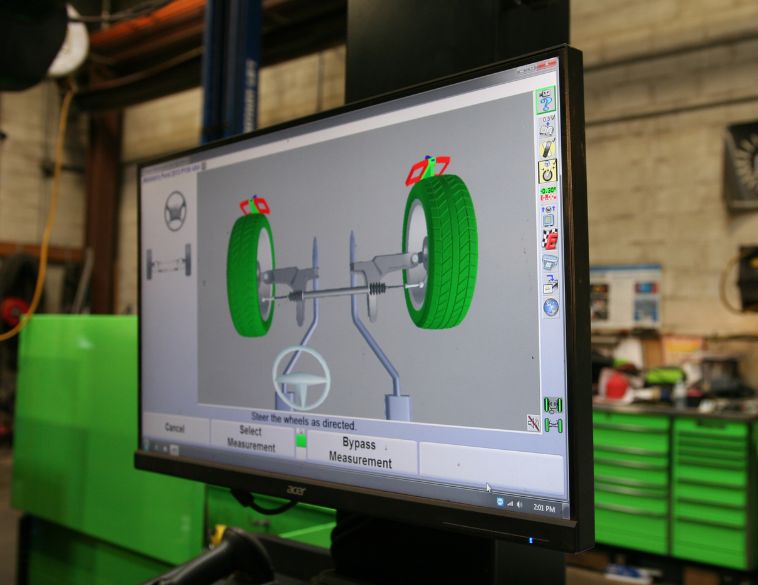DVI technology has changed the dynamic between service centres and their customers.
Arguably one of the biggest game changers in the automotive service sector over the last two decades has been the introduction of digital vehicle inspections (DVI). By enabling staff at repair shops to provide customers with fast, accurate and detailed analysis of the condition of their vehicle, along with messaging, photos and even videos, the relationship between service centre and customer has changed forever.
Anil Kumar, who owns and operates the Midas service centre at 221 Mapleview Drive West in Barrie, Ontario, knows firsthand the difference DVI makes both for his customers and his business.
Building trust
“Digital Vehicle Inspection technology builds a lot of trust [between the repair shop and the customer],” Kumar explains. “When the customer can see with their own eyes, what the vehicle requires from a maintenance standpoint and why it needs it, and from the comfort of their own home, office, or where they happen to be, it makes the decision process that much easier for them, because of the knowledge and transparency the DVI report provides.”
Kumar’s team provide a digital inspection for every vehicle that comes into the service centre. “It’s a courtesy for the customer,” says Kumar. “We will do a full inspection, meaning we will check fluid levels, lights, tire pressure, hoses, wiper blades, belts etc., so we can inform them whether any maintenance or service is required on that vehicle.”
Kumar notes that this approach essentially does two things. Firstly, it allows the customer to have a clear view of their vehicle’s current condition, and secondly it enables them to prepare mentally when it comes to budgeting for maintenance and repair work. And, in today’s economic environment, where many consumers are feeling the pinch of higher costs, it represents a big win, not only because there is greater incentive for consumers to hold onto their existing vehicles but also that by showing them the value of maintenance and repairs it allows them to properly budget for the work required and understand why it’s needed. Additionally, by asking the customer for permission to send them the DVI report via text or SMS once the inspection has been performed, Kumar says the result is better rapport and greater transparency between the client and the service centre. “From our experiences, hardly anybody likes emails these days, particularly when it relates to something like vehicle repair and maintenance,” states Kumar.

Strong relationships
Further smoothing out the process, Kumar’s team also make sure that each DVI report is edited, that notes are provided, and that the customer can drop off or collect the vehicle at their convenience. “It really has helped us build strong relationships with our clients,” he says.
At Autotec NAPA AUTO PRO in Saint John, New Brunswick, owner operator Doug Reevey has been employing digital vehicle inspection technology for several years. And he finds, it’s made a big difference. “One of the reasons why we chose to adopt this technology is because for us, it provides several benefits. Firstly, it builds trust with clients. Secondly it provides communication between the shop and the customer in a different way that what they’re used to. Thirdly it allows us to connect with our clients in a format and on terms they are familiar with, and finally it helps educate them so they can make an informed decision when it comes to maintenance on their vehicle.
Reevey notes that the visual aspect of DVI is a major influencing factor, since it allows clients to see what’s needed with their own eyeballs, instead of taking the word of a service advisor or technician, which was often the case in the past.
While the technology has proved a game changer, Reevey says that the key to making it work long-term for both the business and its customers is putting policies and procedures in place and performing them consistently.
Buying in
“When we first looked at implementing DVI, we had to ask ourselves why we were doing it and what would be the benefits going forward,” says Reevey. “For us a key driver was securing the future of our business and ensuring profitability, as well as providing better service to our customers.” He notes that getting staff to buy in to the DVI concept was critical to making it work effectively. “We had to explain to them why we were doing this,” he says, “and how the technology helps them.” In order to get the team up to speed, Reevey also initiated targets, with a goal of reaching 90% DVI inspections for the shop’s customers on a monthly basis. “It was all about creating consistency,” he says, as well as having customers that come to expect DVI as part of the services the shop provides.
“If you’re ‘re explaining to somebody about a ball joint or tie rod and bottom line needs to be replaced, and they have a video in front of them of their own vehicle that shows why, the technician [and the service advisor] can have a much easier conversation with that customer,” Reevey explains. And with less friction comes better satisfaction, which translates into better reputation, greater customer loyalty and more revenue for the business, something that Reevey and his team have seen first-hand, with glowing consumer testimonials and a very strong referral and repeat business model.
The right solution
Mark Pereira, Division Vice President for Midas in Canada, says that while DVI can be a huge game changer for service centres, it’s important for shops to look at the digital inspection platform that’s right for them. “There are a number of different options available,” he says, “and often, it comes down to personal preference as well as cost and features.”
He notes that a key factor is how the staff will use the technology, such as via a phone, tablet, or desktop computer. “There are a lot of personal preferences but ultimately you want to ensure that the DVI process is smooth and easy to perform and that you can accurately capture [with the technology available], what the vehicle needs from a repair standpoint, why it needs it and deliver that result quickly and effectively to the customer.”
Pereira notes that Midas empowers its franchisees to choose the DVI platform that’s most effective for them. “We provide multiple options so they can do their due diligence and find the solution that works best for their business.” He says that taking this kind of approach helps foster very strong relationships between Midas corporate operations and its franchisees.
Additionally, Pereira notes that by focusing on DVI and emerging technology, as well as equipping its franchisees with the tools and training they need to maximize the capabilities of digital vehicle inspections (including robust support from field staff and operations teams), the result is a well-oiled machine that serves to enhance the reputation of an iconic service brand as well as maximizing opportunities for its franchisees and in turn, consistently providing superior service to their end user customers.



